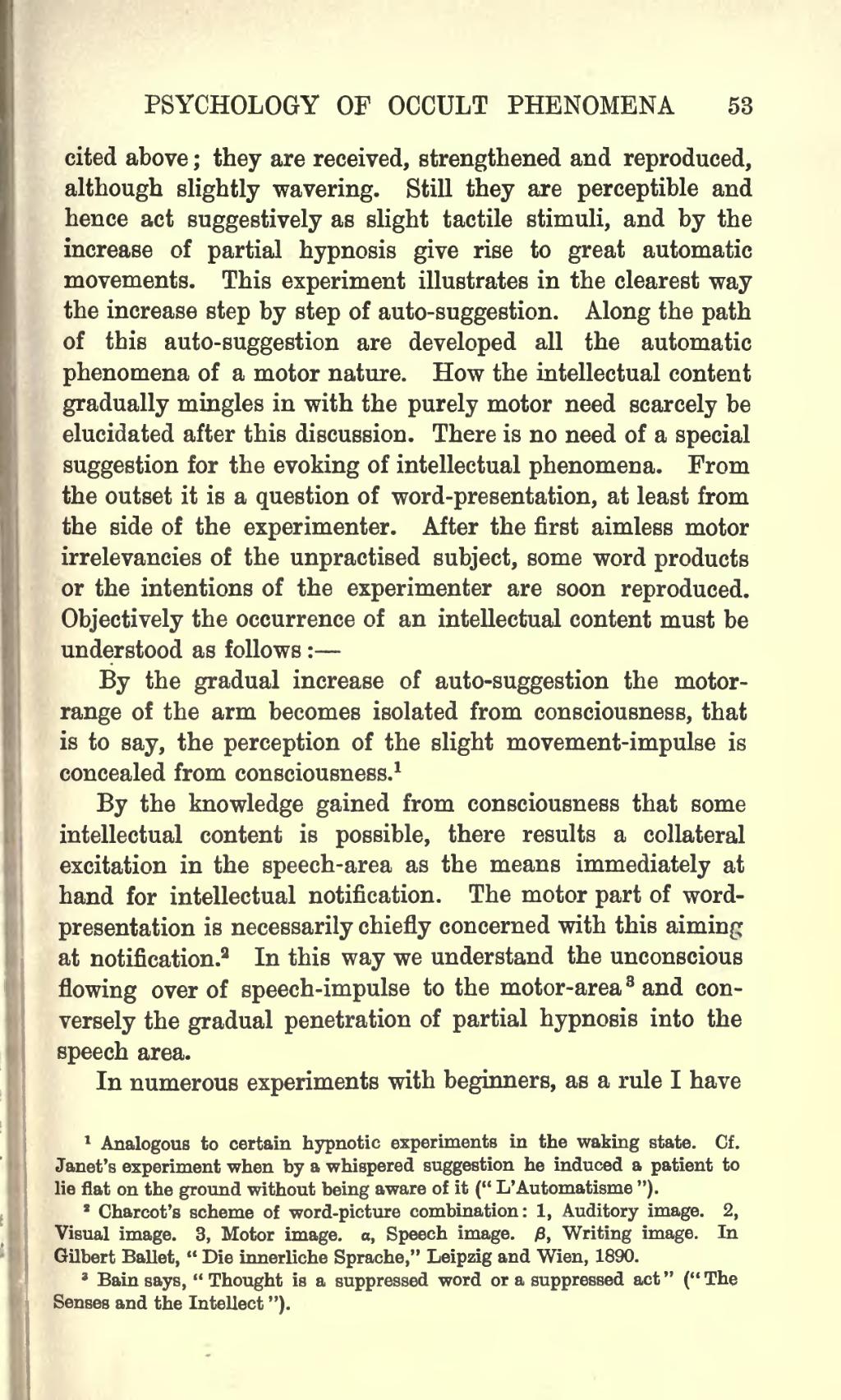cited above; they are received, strengthened and reproduced, although slightly wavering. Still they are perceptible and hence act suggestively as slight tactile stimuli, and by the increase of partial hypnosis give rise to great automatic movements. This experiment illustrates in the clearest way the increase step by step of auto-suggestion. Along the path of this auto-suggestion are developed all the automatic phenomena of a motor nature. How the intellectual content gradually mingles in with the purely motor need scarcely be elucidated after this discussion. There is no need of a special suggestion for the evoking of intellectual phenomena. From the outset it is a question of word-presentation, at least from the side of the experimenter. After the first aimless motor irrelevancies of the unpractised subject, some word products or the intentions of the experimenter are soon reproduced. Objectively the occurrence of an intellectual content must be understood as follows:—
By the gradual increase of auto-suggestion the motor-range of the arm becomes isolated from consciousness, that is to say, the perception of the slight movement-impulse is concealed from consciousness.[1]
By the knowledge gained from consciousness that some intellectual content is possible, there results a collateral excitation in the speech-area as the means immediately at hand for intellectual notification. The motor part of word-presentation is necessarily chiefly concerned with this aiming at notification.[2] In this way we understand the unconscious flowing over of speech-impulse to the motor-area[3] and conversely the gradual penetration of partial hypnosis into the speech area.
In numerous experiments with beginners, as a rule I have
- ↑ Analogous to certain hypnotic experiments in the waking state. Cf. Janet’s experiment when by a whispered suggestion he induced a patient to lie flat on the ground without being aware of it (“L’Automatisme”).
- ↑ Charcot’s scheme of word-picture combination: 1, Auditory image. 2, Visual image. 3, Motor image, α, Speech image. β, Writing image. In Gilbert Ballet, “Die innerliche Sprache,” Leipzig and Wien, 1890.
- ↑ Bain says, “Thought is a suppressed word or a suppressed act” (“The Senses and the Intellect”).
